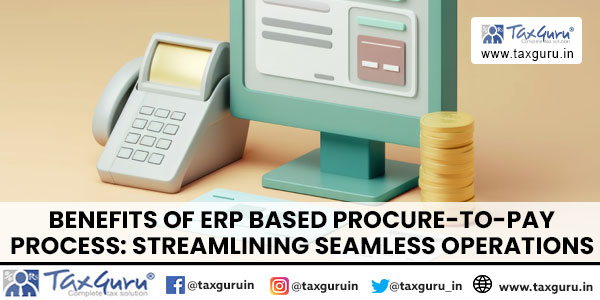The procure-to-pay (P2P) process, which starts from creating a purchase requisition to making a payment and vendor account reconciliation. The structural details are outlined below:
1. Purchase Requisition Creation:
⇒ Ensures faster requisition creation with predefined templates and workflows.
⇒ Streamlines the entire procurement process, from requisition creation to approval, reducing processing time significantly.
⇒ Eliminates manual handling of procurement tasks, reducing labour costs associated with data entry and paperwork. It will also reduce costs associated with paper, printing, storage, and postage, resulting in significant savings over time.
⇒ Real-time visibility into requisition status enhances transparency and decision-making.
2. Purchase Requisition Approval:
⇒ It strengthens the approval process by automated routing of requisitions based on predefined approval hierarchies.
⇒ It reduces the reliance on paper-based documentation, minimizing the need for physical storage space and associated costs.
⇒ It minimises approval delays by sending instant notifications and reminders to the approvers.
⇒ It helps to streamline the approval process, eliminating the need for physical storage of paper documents.
3. Purchase Order Creation:
⇒ It reduces manual data entry, minimizing errors and improving data accuracy.
⇒ Digital document management within ERP allows for easy storage, retrieval, and sharing of procurement-related documents.
⇒ By automating repetitive tasks, procurement staff can dedicate more time to value-added activities such as supplier relationship management, contract negotiation and strategic planning for procurement that can contribute to Organisation`s growth and competitiveness.
⇒ Through the help of ERP, POs are generated promptly, facilitating timely procurement and reducing supply chain disruptions.

4. Purchase Order Approval:
⇒ It ensures that POs are approved promptly, enabling timely procurement of goods and services.
⇒ Budget limit constraints can be enforced before PO approval, preventing overspending and ensuring compliance with budgetary constraints.
⇒ It provides real-time access to attached documents enables approvers to review PO details and allows them to approve POs promptly.
⇒ It assists for automatic generation of emails to suppliers upon PO creation notifies them to acknowledge the receipt of PO without manual intervention.
5. Goods/Services Receipt:
⇒ It streamlines the goods receipt process by automatically generating emails to notify users and suppliers, saving time on manual communication.
⇒ It facilitates compliance with MSME rules by ensuring timely communication with suppliers regarding goods that do not meet quality standards.
⇒ Discrepancies between ordered and received quantities or quality issues are identified promptly for resolution.
6. Invoice Processing:
⇒ Through the help of ERP, matching of invoices with corresponding POs and receipts reduces manual effort and speed up invoice processing.
⇒ Exceptions, such as pricing discrepancies or quantity variations, are flagged for review which minimises the errors.
⇒ It reduces the reliance on manual paperwork by facilitating electronic invoice submission and processing of invoice through the Supplier portal.
7. Invoice Approval:
⇒ Automated workflows route invoices to the appropriate approvers based on predefined rules.
⇒ The system can flag potential issues like invoice discrepancies or approaching due dates to ensure timely action by approvers.
⇒ Timely approvals expedite payment processing and helps to maintain strong supplier relationships.
8. Payment Processing:
⇒ It reduces manual intervention, minimizing the processing time.
⇒ Integration with banking systems facilitates secure and efficient fund transfers.
⇒ It helps to reduce errors and discrepancies through automation, minimizes the risk of financial losses and overpayments.
⇒ Prompt payment processing helps to avoid late payment penalties and take advantage of early payment discounts, may result in cost savings for the organization.
9. Payment Approval:
⇒ Through the help of ERP, payment approvals process reduces delays and ensuring timely disbursements.
⇒ It provides multi-level authorization features which ensures adherence to internal controls and regulatory requirements.
⇒ It will enhance transparency and facilitate compliance with payment policies and regulations.
10. Vendor Account Reconciliation:
⇒ It reduces the need for manual intervention in invoice reconciliation processes, minimizing employee costs associated with supplier bill reconciliation.
⇒ It can promptly identify and minimize discrepancies which will enhance financial visibility and reporting accuracy.
Through the help of ERP, one organization can improve efficiency, accuracy, and streamline the supply chain operations.





